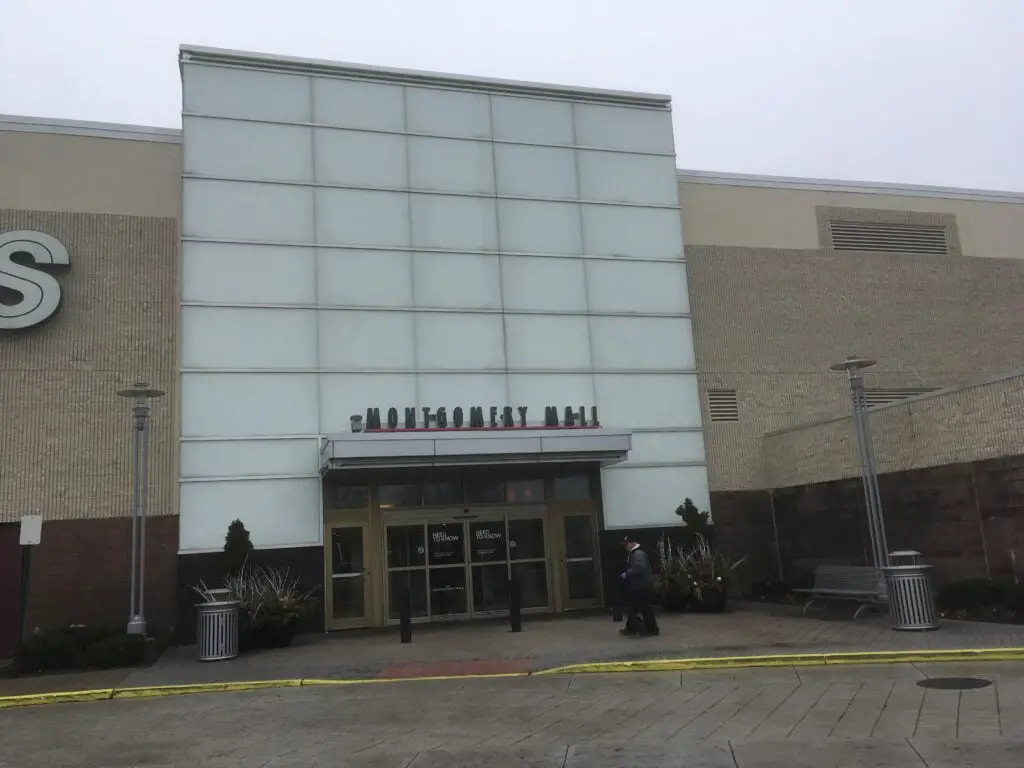The Birth of Montgomery Mall
Montgomery Mall, built in 1977 by The Kravco Company, emerged as a key retail destination in Montgomeryville, Pennsylvania.
Located at the intersection of Pennsylvania Route 309 and U.S. Route 202 Business, the mall's strategic positioning aimed to attract a substantial customer base from the surrounding areas.
The mall initially featured over 90 stores and eateries, making it a bustling hub of commercial activity. At the time of its opening, key anchor stores included Bamberger's, Wanamaker's, Sears, and JCPenney.
Bamberger's, a prominent department store chain, was a major draw for shoppers seeking a variety of goods under one roof.
Wanamaker's, another original anchor, brought a rich retail heritage to the mall.
Founded in Philadelphia, Wanamaker's expanded to Montgomery Mall, contributing to the mall's appeal.
Sears, a household name in retail, provided a wide range of products, from appliances to clothing, ensuring steady foot traffic.
JCPenney, one of the nation's largest department store chains, completed the lineup of initial anchor stores.
Its presence at Montgomery Mall reinforced the mall's status as a premier shopping destination.
These anchors, combined with a diverse mix of smaller retailers and dining options, established Montgomery Mall as a key player in the local retail landscape.
For anyone looking for things to do near Philadelphia, PA, Montgomery Mall was the popular spot, reflecting the vibrant commercial life of the area during its early years.
The Evolution of Anchor Stores
In 1986, Bamberger's became Macy's. This change aligned with Macy's strategy to expand its brand presence in various regions.
Macy's brought in more upscale merchandise, which drew a different crowd.
Wanamaker's, another original anchor, changed, too. In 1995, it converted to Hecht's, but this change didn't last long.
By 1997, Hecht's turned into Strawbridge's after May Department Stores acquired the Strawbridge's chain.
Each of these transitions marked different retail strategies and market adjustments.
Strawbridge's closed in 2006 when Federated Department Stores, which had acquired May Department Stores, restructured its operations.
Boscov's took over the Strawbridge's space in 2007 but faced challenges and closed the following year in 2008.
In 2008, Dick's Sporting Goods came in to fill the void left by Boscov's. This addition was part of a broader trend where malls began incorporating more lifestyle and specialty stores.
Dick's offers a wide range of sporting goods and apparel, catering to the community's active lifestyle needs.

Major Renovations and Changes
The mall underwent many renovations and changes to stay relevant. In 2011, news broke that Wegmans would replace the vacant Boscov's.
Wegmans, known for its vast selection of groceries and prepared foods, signed a lease for a 126,000-square-foot space.
They demolished the old Boscov's to make way for this new store, which opened in November 2013.
This was Wegmans' first location within a mall, and it drew a lot of attention.
In 2018, H&M opened as a junior anchor. This Swedish clothing retailer offered fashion-forward clothing at affordable prices, attracting a younger demographic.
These additions aimed to diversify the mall's offerings and bring in more foot traffic.
Despite these efforts, the mall struggled to maintain its former glory. The Sears store, which had been an anchor since the mall's inception, closed in February 2020.
This closure was part of a larger plan to shutter 96 Sears stores nationwide. The empty space left a noticeable gap in the mall's lineup.
During the COVID-19 pandemic, Montgomery County used the vacant Sears space as a vaccination site.
This temporary use highlighted the ongoing challenges the mall faced in finding long-term tenants.
Even with the renovations and new stores, the mall's future seemed uncertain.
Decline and Financial Troubles
The decline of Montgomery Mall became evident over the past decade. Financial issues hit hard in June 2021. Wilmington Trust, acting as trustee for Wells Fargo Commercial Mortgage, foreclosed on the mall due to unpaid debts.
By June 22, 2021, the mall went into receivership, with JLL taking over management.
A court issued a $118.78 million judgment against Simon Property Group, which owned the mall at the time.
In November 2021, Kohan Retail Investment Group bought Montgomery Mall for $55 million.
This sale, at a much lower price than its debt, underscored the mall's financial troubles.
Despite the change in ownership, the mall's future remained uncertain, as Kohan Retail Investment Group did not release any redevelopment plans.
In 2022, Kohan sold the Wegmans site at the mall to ExchangeRight for $22.6 million.
This sale indicated a strategy to liquidate parts of the property, possibly to raise funds or reduce debt.
The sale of the Wegmans site also reflected ongoing changes in the mall's ownership and management strategies, leaving the rest of the mall's fate uncertain.

The Present State
Montgomery Mall has seen better days. As of now, it houses around 70 stores, and many spaces sit empty. This is a far cry from its peak when it boasted over 90 stores.
The decrease in foot traffic has become a noticeable issue. Walking through the mall, I see fewer shoppers and more vacant storefronts.
The remaining major anchors are Dick's Sporting Goods, JCPenney, Macy's, and Wegmans.
Each of these stores tries to draw in customers, but the overall vibe of the mall feels quieter.
Future Outlook
Montgomery Mall has faced many challenges over the past years, reflecting broader trends in the retail industry.
Retailers and shoppers at Montgomery Mall are concerned about the mall's future.
As Macy's announced plans to close 150 of its stores nationwide by 2026, speculation grew about the fate of its location in Montgomery Mall.
Macy's did not confirm whether this particular store would close, but the uncertainty has added to the mall's woes.
Kohan Retail Investment Group, which bought the mall for $55 million in 2021, has not provided clear plans for revitalizing the property.
The impact of the COVID-19 pandemic further exacerbated the mall's decline. The pandemic accelerated the shift to online shopping, reducing the number of visitors to the mall.
Montgomery Township officials have not been informed of any redevelopment plans for the mall, which adds to the anxiety of both retailers and shoppers.
Without a clear strategy, the mall's prospects remain bleak. The future of Montgomery Mall hinges on finding a viable redevelopment strategy.
To survive, the mall needs to adapt to changing consumer behaviors and market conditions.
